How and with what to spray currants in the spring against pests and diseases
Processing currants in spring and autumn are mandatory stages of plant care. The procedure protects the bush from bacterial, fungal and viral diseases, strengthens the immune system, stimulates growth and improves the taste of berries. It is important to follow the recommendations and dosages, carry out the treatment in the morning or evening, and also monitor the appearance of the plants. We will tell you in the article which means are effective in combating diseases and pests.
Goals of spring and autumn currant processing
The main purpose of spring and autumn treatment is protection from diseases and pests. Only healthy currant bushes produce a full and tasty harvest. In the spring, with the arrival of warmth, fungal spores and other microorganisms become more active, which provoke the occurrence of diseases and insect pests. When processing, it is important to adhere to deadlines; it is not recommended to delay the procedure for a long time.
In the fall, after harvesting, currants need to recuperate and prepare for the winter. Gardeners spray bushes to increase frost resistance, eliminate pests, improve health and rejuvenate.
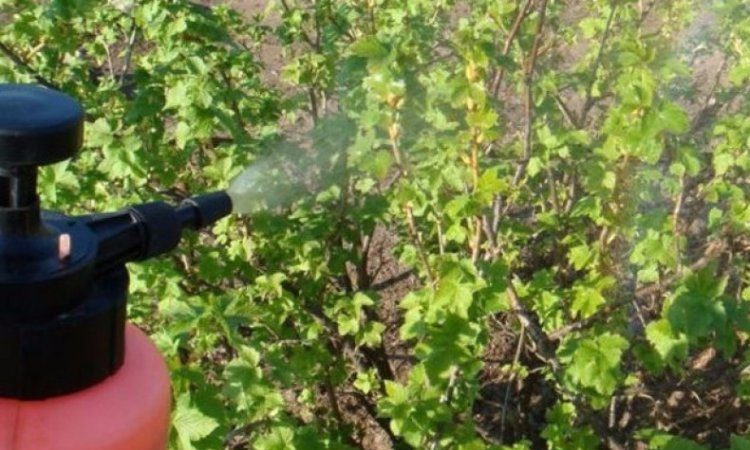
What pests threaten currants?
In early spring, currants are threatened by scale insects and leaf rollers. Insect larvae overwinter in the soil and are frost-resistant. Scale insects enter the garden with infected seedlings, soil, wind, birds or rodents. Insects suck the juice out of currants, damaging leaves, shoots and even berries.The bushes gradually dry out and wither, and in the meantime scale insects move to other garden plants. Pests leave a yellow sticky coating on the bushes, which flows onto other leaves.
Leafrollers appear on shrubs mainly in warm and humid weather. For currants, it is not so much adult butterflies that are dangerous as caterpillars. Gray insects are capable of destroying all currant bushes if measures are not taken in time. Reasons for the appearance of leaf rollers: acidic soil, lack or excess of minerals, excessive watering. Signs of damage are dry and thin leaves, deformed fruits, yellow and brown sores on shoots and leaves.
Currant bud mite is also a dangerous pest. They get rid of insects not only by spraying, but also by collecting them manually. Bud mites suck the juice from the plant and also transmit a dangerous disease - currant blight. If the bush is sick, it cannot be treated; gardeners can only remove it and burn it.
Attention! On currant bushes there are spider mites, aphids, gall midges, moths, moths, sawflies, and glass beetles. To see most insects, it is important to inspect your currants regularly. Many pests are very small, making them difficult to notice unless inspections are carried out.
Dangerous diseases
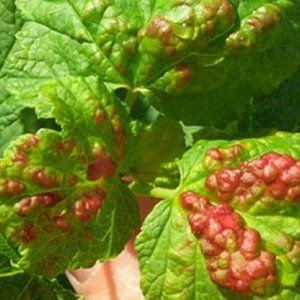
Currants are affected by anthracnose, rust, and white spot. The causes of anthracnose are fungal spores that overwinter on fallen leaves and, with the arrival of spring, spread throughout the garden. In infected currants, the shoots become sluggish and slow in growth. Brown spots appear on the leaf blades - the main sign of anthracnose damage.In dry and warm weather, cracks appear on the shoots, which eventually become covered with rot. If anthracnose reaches the berries, they become covered with small black dots and fall off. Fungal diseases are most often found on black currants.
Rust occurs due to waterlogging, weeds, infected plants growing next to currant bushes. Orange-brown spots appear on top of the leaves, and yellow pads appear below. It is in them that the fungus lives, waiting for suitable conditions for development. Rust spreads rapidly throughout the bush: if the plant is not treated, soon all the leaves will be covered with orange fluff.
White spot - This is currant septoria, which affects berries, leaves and young shoots. The first signs of the disease occur in early May: dark brown spots with a brown border form on the leaves, which turn white over time. At the first stages of infection, gardeners remove the leaves and burn them, and the bush is thinned and sprayed. Septoria occurs mainly in central Russia; favorable conditions for the development of the fungus are humidity, weather changes, and fogs. In addition to the listed diseases, currant bushes are affected by reversion, American powdery mildew, black spot, glass rust.
Processing times
Dates processing depend on the region in which currants are grown. In the northern regions, bushes are sprayed later, since spring there comes 2-3 weeks later than in the southern regions. Gardeners recommend treating plantings at the end of March or beginning of April, when the air temperature is around +16°C. For the procedure, choose the morning or evening of a dry and windless day.If it rains after treatment, there will be no benefit.
Attention! The most reliable way to protect currant bushes from diseases and pests - carry out processing all year round. In addition to manually removing damaged areas, summer residents use spraying with urea, Karbofos, ammonium nitrate, Bordeaux mixture, tobacco infusion, nettle and laundry soap.
After fruiting, currants are processed in late August or early September. Summer residents contribute mineral and complex fertilizersto strengthen the plant’s immunity and prepare it for the winter. From mid-October until the first snow, add organic matter: chicken droppings, mullein infusion, liquid manure. The autumn treatment ends by spraying the bushes with a solution of Bordeaux mixture.
Preparatory activities
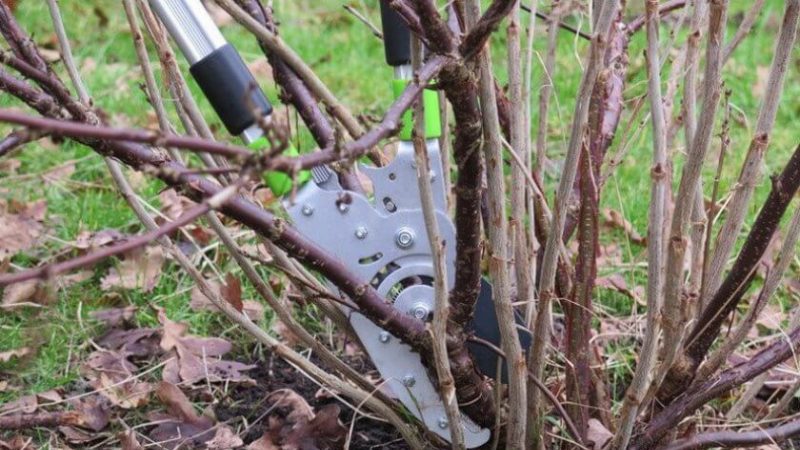
In spring, treatment is carried out after shrub trimmings - after the snow has melted and until the kidneys awaken. If you prune the bush after they swell, this will injure the plant and reduce yield. For pruning, use garden pruning shears; breaking branches with your hands is not recommended. First of all, massive branches that are covered with moss, lichen, ulcers, as well as dry 4- and 5-year-old shoots are removed. Then the branches that are strongly inclined towards the ground and those that grow inside the bush are cut off. Young shoots are shortened by 1/3, leaving the buds. This way they branch better.
When pruning, it is important to remember the differences between black and red and white currants - the amount of the future harvest depends on this. Black currants are pruned more often because their branches grow faster. In white and red, the growth of zero shoots is not so intense; they consistently bear fruit even on 5-7-year-old branches.Also, it is not recommended to shorten the tops of blackcurrants too much. In addition to pruning, gardeners clean the beds of last year's leaves, weeds and debris. The effectiveness of the procedure depends on this.
What to spray in autumn and spring
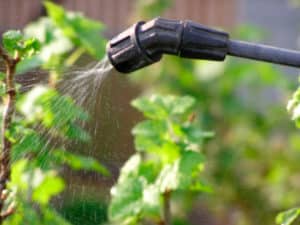
For processing use:
- chemical and biological preparations - for prevention and treatment, they are purchased in specialized stores for gardeners;
- folk medicines are prepared from improvised means and used for prevention; treatment with copper or iron sulfate, ash, and Bordeaux mixture is popular.
Purchased chemicals
Purchased chemicals are aimed at treating diseases; the active components act quickly. To treat fungal diseases, fungicides “HOM” or “Abiga-pik” are used. Complex fungicides treat powdery mildew and anthracnose and consist of inorganic substances and copper. Also popular is the chemical “Tiovit Jet,” a sulfur-based contact fungicide that is used at the beginning or middle of the growing season. The good thing about the drug is that for preparation you only need to dilute the powder with water.
To protect against rust and white spotting use the chemical “Topaz”. It is made from penconazole, a pesticide that inhibits the development of dangerous bacteria. Systemic fungicide "Topaz" is used for preventive and therapeutic purposes; it retains its effect for 4 years. Stops the development of bacteria and fungi within a few hours after treatment.
To protect against all types of fungal diseases, the fungicide “Trichopol” is used. Gardeners claim that the drug works flawlessly and protects currants with a 100% guarantee. Trichopolum is sold in tablets, which are crushed into powder and mixed with water.
Biological agents
Biological drugs are created on the basis of live bacterial cultures that suppress harmful fungal infections. Biological agents are less aggressive than chemicals. Gardeners use them for preventive and medicinal purposes.
The drug “Fitop” helps against diseases and insect pests. It strengthens and heals the root system of the plant, increases productivity and yield, suppresses the growth and development of pathogenic microflora on fruits and shoots. Fitop is also used to disinfect planting material. The drug is sold in powder form. “Fitop” is not harmful to the environment and humans.
Summer residents use Fitosporin against fungal and bacterial infections. The microbiological agent acts immediately after treatment and is used during any growing season. "Fitosporin" suppresses the development of powdery mildew, root rot, and anthracnose. The drug is affordable and economical in consumption, available in the form of powder, paste or liquid.
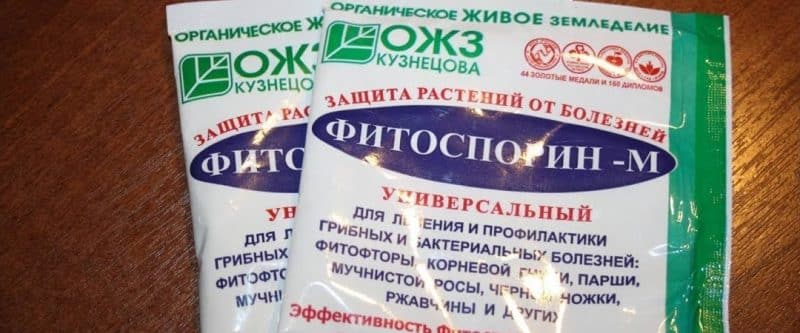
Attention! Lepidocid is effective in use. The drug copes with all pests and affects their reproductive function. “Lepidocide” is used at any stage of plant development; it does not accumulate in the soil and does not affect the taste of the berries.
Traditional methods
Traditional methods have a preventive effect. It is important to remember that if the bushes already show signs of damage, using traditional methods for treatment is useless. In early spring, the bushes are watered and sprayed with boiling water. Scalding helps the plants wake up and also gets rid of larvae that have been hibernating in the soil during the winter. For the greatest effect, add baking soda to the water - 3 tbsp is required per bucket of boiling water. l.Subsequently, the soda solution is used to eliminate aphids.
To prevent the appearance of insects, gardeners use garlic infusion - 300 g of garlic poured into 10 liters of water. The mixture is infused for a day, diluted with water in a ratio of 1:1. Currants are sprayed with garlic in dry weather. To enhance the effect, add 50 g of grated laundry soap to the solution. An infusion of tobacco also helps: 400 g of dry leaves are poured into 10 liters of water, left for 48 hours, diluted with water and started spraying. Other folk remedies are also popular: treatment with iodine, ash, mustard infusion and wormwood decoction.
How to properly process currants in spring
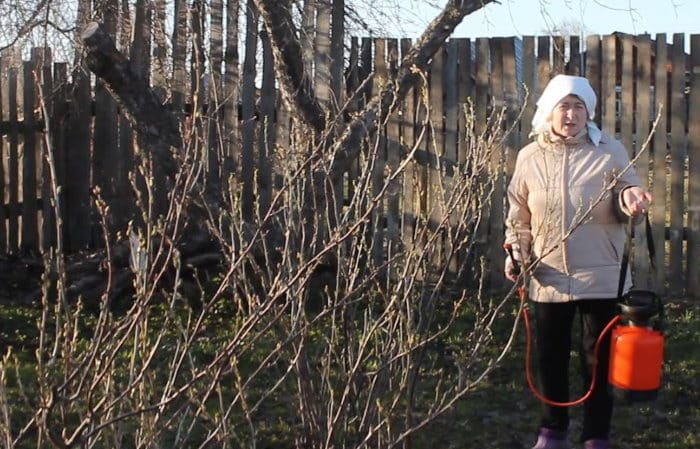
Summer residents treat currants in the spring against diseases and pests using hand or backpack sprayers. Gardeners prepare the solution in advance. If these are chemical or biological drugs, it is important to read the instructions for use and dosage. An excess of chemicals will negatively affect not only the plant, but also human health. If you are preparing folk remedies, observe the timing of preparing the infusions. They are unsuitable for long-term storage, so before each procedure, summer residents prepare a fresh solution.
We should not forget about precautions, especially when it comes to chemical spraying. Gardeners carry it out in a protective suit, goggles and a respirator. During treatment, it is forbidden to eat or drink, and children or animals should not be nearby. If the product comes into contact with the skin, eyes or mouth, it is recommended to consult a doctor immediately. Pregnant or lactating women are not allowed to process. Store chemicals in well-closed places out of the reach of children.
Are there any nuances in processing black, red and white currants?
Some pests prefer a certain type of currant. For example, the borer most often appears on black, and the leaf roller on red. Gall aphids can be seen more often on white and red ones, as well as sawflies, which do not like the dense foliage of black currants. The bud mite is a frequent visitor to black berries. Otherwise there are no differences in processing.
Conclusion
Treating currants in the spring against pests and diseases is a simple process; The main thing is to remember a few features. Before spraying, the bushes are pruned, old and dry shoots are removed, and space is given for the development of new fruit-bearing branches. Treatment is carried out using folk, biological and chemical means. Tobacco and ash solutions prevent the appearance of pests, Fitosporin protects against fungal and viral diseases. Chemicals, for example, "HOM" or "Topaz", are intended for the complex treatment of most diseases.
For processing, summer residents choose a dry and windless day. Do not forget about precautions: when processing drugs, use an apron or protective suit, gloves, goggles and a respirator.